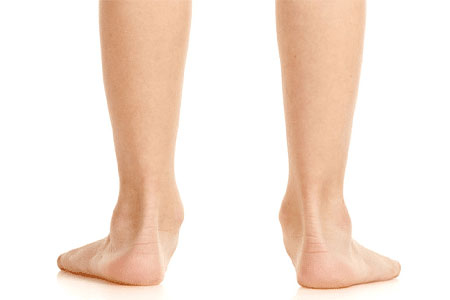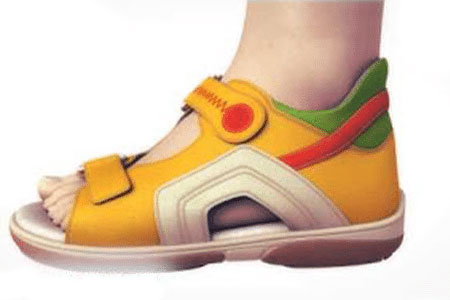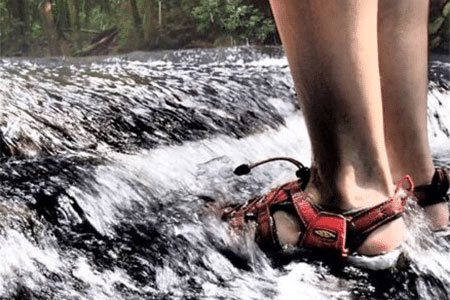Sandals for Hypermobility – Extra Arch and Heel Support!

Do you have a child who has been diagnosed with hypermobility? Have you been wondering what type of shoes your child should wear during the summer season? After creating a resource that describes the best everyday sneakers for children with hypermobility, several families started asking me to create a similar one describing the best sandals for hypermobility.
Pro Tip: If you’re pressed for time, you can go straight to the selection of sandals for hypermobility.
Don’t Take the “Wait and See Approach” – Be Proactive!
Most doctors are hesitant to diagnose a child with hypermobility until the child starts complaining about joint pain or fatigue. Taking early action is crucial to help treat this condition, and something so simple as wearing the correct pair of shoes can make the world of difference. If your child has been diagnosed with hypermobility and is experiencing foot and leg pain, you will have to find shoes that provide good support.
Hypermobility is believed to be hereditary. Some children are simply born with extra soft and flexible joints. Did you know that it is estimated that 15% of all children are hypermobile?
In simple words, when children have hypermobility, their muscles have to work harder to maintain balance, which often leads to foot and let pain. If your child has been diagnosed with hypermobility, don’t panic, please know that it will get better.
How Do the Feet of a Child with Hypermobility Look Like?
Take a look at the image below. Does it look familiar? Children with hypermobility are often flat-footed, have rolled ankles, and overpronate. Hypermobility may cause your kids’ feet and ankles to roll in, given an excessively flat-footed appearance. This leads to your child’s feet to collapse, throwing your whole child’s body out of alignment.

Your child might be already wearing a pair of supportive shoes and orthotics, but I am here to help you find a pair of summer sandals that will provide good support to your child’s feet. The correct type of sandals can help improve your child’s posture and prevent foot and leg pain during the summer. The issue is that there is only a small selection of sandals that provide the correct amount of support.
What Makes the Sandals I Recommend Effective for Kids with Hypermobility?
We need to avoid sandals that are too flat or unsupportive since this will make your child more prone to falling and experience foot and leg pain.
The sandals that I recommend have proven to be the most effective ones in treating children with hypermobility. The sandals provide a substantial outsole, and an anatomical foot-bed with an internal support mechanism to reduce the impact that your kids’ feet and legs take every time they come in contact with the ground.

Another awesome feature that the sandals provide is that they come well-padded around the ankle area, which will help cushion your child’s ankles and prevent heel pain.

A lot of children with hypermobility have to deal with overly flexible ankle joints that roll spontaneously, leading to a lot of twisted ankles and making your child more prone to falling. This is why it’s so important to keep your kids’ ankles supported.
Another important feature that your kids’ sandals need to provide is extra depth. This feature will allow your child’s feet to fit comfortably inside the sandals, and prevent the top part of your child’s feet from rubbing against the top part of the sandals.
The sandals I describe below will help correct your child’s foot posture and provide extra stability around the ankles. Disclosure: Some links in this post may be affiliate links and we may receive a small commission (at no extra cost to you) when you click our links and make purchases.
The Best Sandals for Hypermobility
Below you can find a selection of the best sandals for hypermobility. Many of the sandals featured below come in several color options, so if your child likes a specific model, please make sure to click through and see if they have the desired color.
Toddler Sizes (0 to 10)
- Sandal style Newport H2 by Keen
- Fits medium and wide feet (fits high insteps)
- This internal support mechanism is anatomically engineered to provide excellent arch support
- Machine washable
- Order this sandal half a size larger than your toddler’s current foot size
- Sandal style Newport H2 by Keen
- Fits medium and wide feet (fits high insteps)
- This internal support mechanism is anatomically engineered to provide excellent arch support
- Machine washable
- Order this sandal half a size larger than your toddler’s current foot size
- Sandal style Pedro by Memo
- Fits medium and wide feet
- Thermoplastic asymmetric stiff heel counter for proper feet protection and support
- This is an orthopedic sandal
- Genuine leather lining
- Order this sandal half a size larger than your toddler’s current foot size
- Sandal style Betti by Memo
- Fits medium and wide feet
- This is an orthopedic sandal
- Thermoplastic asymmetric stiff heel counter for proper feet protection and support
- Genuine leather lining
- Order this sandal half a size larger than your toddler’s current foot size
- Sandal style Psyclone by Teva
- Fits medium, wide, and extra wide feet
- Eva foam footbed cushions and softly supports
- Rubber outsole for great traction
- Order this sandal half a size larger than your toddler’s current foot size
- Sandal style Hurricane by Teva
- Fits medium, wide, and extra wide feet
- Two adjustable velcro straps
- Eva foam footbed cushions and softly supports
- Rubber outsole for great traction
- Order this sandal half a size larger than your toddler’s current foot size
- Sandal style Apakowa
- Fits medium and wide feet
- Leather insole with arch support
- Two points of adjustability
- Order this sandal a whole size larger than your toddler’s current foot size
- Sandal style Apakowa
- Fits medium and wide feet
- Leather insole with arch support
- Two points of adjustability
- Order this sandal a whole size larger than your toddler’s current foot size
- Sandal style Lucky Brand
- Fits medium and wide feet (fits high insteps)
- Supportive footbed
- Adjustable buckles at the front and velcro strap at the back for easy on and off
- Order this sandal half a size larger than your toddler’s current foot size
- Sandal style by Geox
- Fits medium and wide feet
- EVA foam footbed cushions and softly supports for all-day comfort
- Rigid at the toe box
- Order this sandal half a size larger than your toddler’s current foot size
Little/Big Kid Sizes (10.5 to 7)
- Sandal style Agnes by Memo
- Fits medium, wide, and extra wide feet
- 100% leather made
- Extra depth to accommodate orthotics, AFOS, and internal modifications
- Ability to adjust the Hook and Loop strap length to the different feet width
- This is an orthopedic sandal
- Order this sandal a whole size larger than your child’s current foot size
- Sandal style Michael by Memo
- Fits medium, wide, and extra wide feet
- 100% leather made
- Extra depth to accommodate orthotics, AFOS, and internal modifications
- Ability to adjust the Hook and Loop strap length to the different feet width
- This is an orthopedic sandal
- Order this sandal a whole size larger than your child’s current foot size
- Sandal style Newport H2 by Keen
- Fits medium and wide feet
- This internal support mechanism is anatomically engineered to provide excellent arch support
- Machine washable
- Order this sandal half a size larger than your child’s current foot size
- Sandal style Newport H2 by Keen
- Fits medium and wide feet
- EVA insole with arch support for all-day comfort
- Machine washable
- Order this sandal half a size larger than your child’s current foot size
- Shoe style Hurricane by Teva
- Fits medium and wide feet
- 3 points of adjustability so children can make the sandals as tight or loose as they want
- Eva foam footbed cushions and softly supports for all day comfort
- Rigid at the toe box
- Order this sandal a whole size larger than your child’s current foot size
- Shoe style Hurricane by Teva
- Fits medium and wide feet
- 3 points of adjustability so children can make the sandals as tight or loose as they want
- Eva foam footbed cushions and softly supports for all day comfort
- Rigid at the toe box
- Order this sandal a whole size larger than your child’s current foot size
- Sandal style Rio by Birkenstock
- Fits medium and wide feet
- Suede-lined cork footbed offers excellent arch support, a deep heel cup, roomy toe box, and molds to the shape of each individual’s foot
- Flexible and lightweight EVA outsole is durable and shock-resisting
- Order this sandal a whole size larger than your child’s current foot size
- Sandal style Milano by Birkenstock
- Fits medium and wide feet
- Suede-lined cork footbed offers excellent arch support, a deep heel cup, roomy toe box, and molds to the shape of each individual’s foot
- Flexible and lightweight EVA outsole is durable and shock-resisting
- Order this sandal a whole size larger than your child’s current foot size
- Sandal style Newport H2 by Keen
- Fits medium and wide feet
- EVA insole with arch support for all-day comfort
- Machine washable
- Order this sandal half a size larger than your child’s current foot size
- Sandal style Newport H2 by Keen
- Fits medium and wide feet
- This internal support mechanism is anatomically engineered to provide excellent arch support
- Machine washable
- Order this sandal half a size larger than your child’s current foot size
What Sandal Size Should You Order?
Please note that children with hypermobile joints don’t need as much growing room. If you leave too much growing room in your kids’ shoes, your child won’t get the full support that the shoes have to offer and you will also be compromising your child’s stability.
Most sandals are not available in half sizes, they are available in whole sizes only. The sandals that I recommend for children with hypermobility fit “true to size”. Let me show you a couple of different scenarios that will help you determine what sandal size to get for your child:
- If your child measures a foot size 5, you will order the size 6 and your child will get the correct amount of growing room.
- If your child measures a foot size 5 ½, you will order the size 6 and your child will get the correct amount of growing room
Don’t forget that you should not provide your child with hypermobility with a lot of growing room. I understand that most parents might be tempted to leave a good amount of growing room, especially with seasonal footwear. It’s okay to leave some growing room so your child can wear the sandal for the whole summer, but please make sure that you don’t leave excessive room since this can lead to compromising your child’s stability.
Should You Fit Orthotics Inside Your Kids’ Sandals?
I want to clarify that you should never try to fit an orthotic inside your kids’ sandals. Even if you find a sandal that can accommodate your child’s orthotic, the orthotic won’t do any good if fitted inside a pair of sandals. Orthotics only work in shoes that provide good arch and ankle support, and while certain sandals do provide good arch support, they lack a heel counter, which is the back part of the shoes that provides ankle support.
What Are the Best Everyday Sneakers for Kids with Hypermobility?
If you happen to need an everyday pair of sneakers for your child with hypermobility, take a look at another article I wrote where I describe the best shoes for kids with hypermobility.

Sandals for Hypermobility – The 5 Most Important Features!
There are 5 key features that the sandals I recommended provide to keep your kids’ feet supported and healthy:
1️⃣ Substantial Outsoles: This feature cushions and supports your kids’ feet, and minimizes the impact that your kids’ feet take every time they come in contact with the ground. The sandals provide an anatomical foot-bed with a built-in arch support that prevents your kid’s feet from collapsing and rolling inwards or outwards.
2️⃣ Extra Heel Support: These sandals provide extra padding around your child’s heels, which helps prevent your child from developing heel pain.
3️⃣ Lightweight and Flexible: The sandals must be supportive but lightweight and flexible to prevent your child’s feet and legs from easily getting tired.
4️⃣ Traction: This feature prevents your child from slipping and falling, especially when walking on wet, slippery surfaces.
5️⃣ Secure Closure: The sandals come with a velcro strap and a toggle lace to provide maximum stability to your child’s feet. Make sure that your child pulls the velcro closure strap tightly to get the full support that the sandal has to offer.
How to Determine Your Child’s Exact Foot Length and Shape?
Before you leave, there is a resource I created that will help you determine your child’s foot size from home.
My recommendation to parents is to take their children to their local children’s shoe store, where a shoe fitter can properly measure their kids’ feet and find shoes accordingly. If you don’t have a local kids’ shoe store in your area, start by reading an article I wrote where I describe the simplest, yet most effective way to figure out your child’s foot size from home.
In that article I help parents determine their child’s exact foot length and whether the child has narrow, medium, wide, or extra wide feet. I also will be able to tell you whether your child has a high instep or not.
Now that you know what are the best sandals for hypermobility, you are ready to keep your child’s feet healthy during the summer.
Have you tried this sandal style before? Has it been effective in supporting and treating your child’s foot and leg pain? Please share your thoughts below so other parents can benefit from your experiences.























